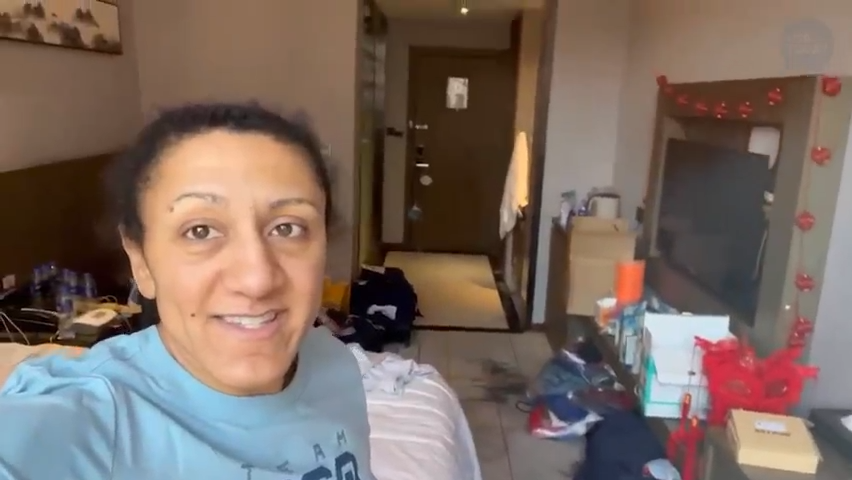Belgian skeleton racer says lack of movement in isolation may have led to hamstring injury

BEIJING – Belgian skeleton racer Kim Meylemans captured the attention of the world at the start of these Olympics when she posted a distressed, tearful video on social media recounting how she ended up in an isolation facility after a positive test for COVID-19 upon arrival.
In the video, Meylemans said she had been told she was going to the Olympic Village for quarantine to be treated as a close contact. Instead, the vehicle she was riding did not turn into the village and took her elsewhere. The uncertainty about where she was going and what was happening shocked and frightened her and raised questions about how the Beijing Organizing Committee was treating athletes with COVID issues.
After the video and the uproar it created, Meylemans was moved into the village and her conditions improved. She was released in just enough time to get her practice runs and compete Friday. She currently sits in 11th place at the halfway point, .93 seconds behind leader Jaclyn Narracott of Australia.
“I think the way the world responded was what got me out of isolation so quickly,” she said. “It was great honestly to feel that support especially from Belgium, to see other athletes reach out and support me. It’s unfortunate that it happened but we recovered well and did our best to just focus on racing.”
'I CRY EVERY DAY': Athletes slam food, conditions in quarantine hotels
ELANA MEYERS TAYLOR: What isolation is like for athletes who test positive in Beijing
Meylemans faced another obstacle when she pulled a hamstring in the final training run. She said it caused her significant pain, particularly the second time down the track, but was grateful just to be able to compete.
She said it’s possible the lack of movement while in isolation contributed to the injury, which is especially tough to take because she does not believe she was ever actually positive for COVID-19 while in Beijing. Instead, she said, the Belgian team believes that that dead virus remnants of an infection from around New Year’s triggered the tests. Medical experts warned of that possibility heading into the Beijing Games given the highly sensitive testing threshold used to enter the so-called “Closed Loop” system.
“These were all things I knew could happen,” Meylemans said. “It was more what happened (with the initial isolation facility) that was in my opinion not right. But in general, after that point, I was able to do my thing and focus on racing.”
She said she did not think she needed an apology from the IOC, which worked on her behalf to improve her situation.
“What happened happened,” Meylemans said. “They made sure I got out of there, and that’s all that matters.”